In amongst a sprinkling of dots in the Pacific Ocean is a sub-tropical island whose ivory shores will lead the insouciant, this July, to secluded emerald-green coves which, as the sun bids its daily adieu, transform into inlets of fire – epitomizing the warmth, vibrancy, depth and serenity of all that is Okinawa.
MOTHER TONGUE
“Nmarijima nu kutuba wasshii nee kuni n wasshiin.” (Forgetting your native tongue means forgetting your native country.) – Okinawan proverb
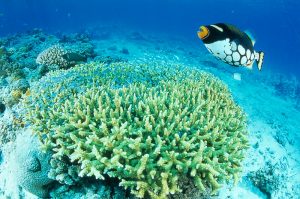 With its subtropical oceanic climate, lush natural expanses, famed crystal-blue waters and sandy-white beaches, it’s no surprise that Okinawa plays host to some 4.12 million tourists each year. Located between mainland Japan and Taiwan, and sharing the same latitude zone as resort-giants Hawaii, Florida and the Bahamas, Japan’s south-westernmost prefecture comprises 161 Pacific islands. These islands, home to some 1.3 million people, span 1,000 kilometers from east to west and 400 kilometers from north to south, and of the 161, only 44 of them are regularly inhabited by descendents of the Kingdom of the Ryukyu – known today as Okinawans.
With its subtropical oceanic climate, lush natural expanses, famed crystal-blue waters and sandy-white beaches, it’s no surprise that Okinawa plays host to some 4.12 million tourists each year. Located between mainland Japan and Taiwan, and sharing the same latitude zone as resort-giants Hawaii, Florida and the Bahamas, Japan’s south-westernmost prefecture comprises 161 Pacific islands. These islands, home to some 1.3 million people, span 1,000 kilometers from east to west and 400 kilometers from north to south, and of the 161, only 44 of them are regularly inhabited by descendents of the Kingdom of the Ryukyu – known today as Okinawans.
Okinawa was once a small independent kingdom that prospered through trade with Japan, China, Korea and Southeast Asia. As goods were traded so too was culture and through the Ryukyus’ dealings with foreign influences a cultural bedrock was formed that has and continues to set Okinawans apart from their mainland counterparts in terms of history, ideology, cuisine, physical attributes, music, dance and language.
The Japanese Ryukyu dialect actually stems from Hokkaido, in northern Japan, to Yonaguni in the southern Ryukyus, which lies 73 kilometers off the coast of Taiwan. The time of separation of the Shuri (Okinawa) and Kyoto (Japan) dialects has been estimated as occurring between the sixth and 12th centuries. The Okinawan language comprises numerous dialects and sub-dialects, from village to village, however it was the Shuri dialect that came to be recognized as the official language used in conversation by Okinawans. However, in 1879 the Meiji Imperial Government ordered that Okinawa – the Kingdom of the Ryukyus – be a prefecture of Japan and, as such, Japanese be spoken on the islands as the standard language. An increase in travel between the islands and the mainland, as well as media proliferation, have also contributed to the erosion of the Ryukyu dialect – a cultural dilemma which has, for the past century, been voiced by village elders and enucleated through proverbs.
THE HEART OF THE ISLAND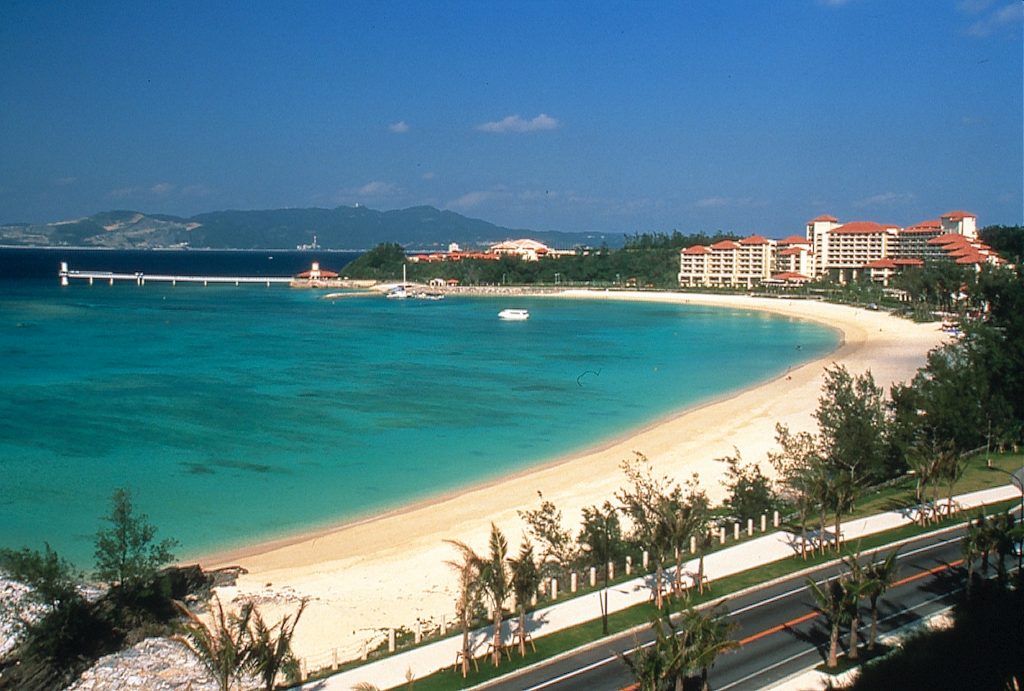
“Choo kukuru ru dee ichi.” (The heart is the most essential human quality.) – Okinawan proverb
All paths to Okinawa lead directly to its cosmopolitan capital, Naha. Located on the southwestern coast of Okinawa Island, Naha is home to more than 300,000 people and is a veritable melting-pot of parochial folk, foreign-residents and visitors – many of whom come from mainland Japan, Taiwan and Korea. Naha is a commercial portal to many of the smaller surrounding islands as well as the attractions on the main island, including the Southeast Botanical Gardens, Okinawa Zoo, Shuri Castle, Hiji Waterfall and Ocean Expo Park – with its famed panoramic aquarium.
Naha itself boasts more than enough local allure to satisfy the most exacting of weekend vacationer this July. Overworked urbanites in search of some long-owed R&R, “culture vultures” looking to devour the city’s rich heritage and historical remnants, or parents looking to keep their little ones engrossed in healthy, active pursuits will all find a city bursting at the seems with enticements to delight all.
Weekenders who can’t get enough of the hustle and bustle head to Kokusaidori Street, the heart of Naha. This famous strip has affectionately come to be known as the “miracle mile.” The street pulses day and night, as tourists and locals rub shoulders in street-front restaurants, bars, department stores, marketplaces, boutiques and washita – local stores selling original wares unique to this Pacific utopia.
This street with all its vibrance, color and noise typifies Okinawa’s progressive, commercial plight, but at the same time the bright-faced, happy-go-lucky shopkeepers and the contented locals, old and young, meandering by, impart a side of Okinawan ideology that has and continues to permeate through its society. The warm, resilient and uncontrived, affable nature of the Ryukyu people, for many visiting or re-visiting Naha, is where the true charm of this city lies – and indeed the prefecture as a whole.
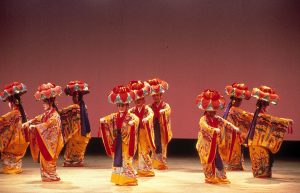 Naha is also home to four of the nine “Gusuku Sites and Related Properties of the Kingdom of the Ryukyu,” which in December 2000 was officially inscribed as Japan’s 11th World Heritage Site. Through this symbolic gesture, UNESCO has recognized the cultural significance of the Ryukyu Kingdom and signaled an intention to preserve it as a treasure to be valued by all.
Naha is also home to four of the nine “Gusuku Sites and Related Properties of the Kingdom of the Ryukyu,” which in December 2000 was officially inscribed as Japan’s 11th World Heritage Site. Through this symbolic gesture, UNESCO has recognized the cultural significance of the Ryukyu Kingdom and signaled an intention to preserve it as a treasure to be valued by all.
One of these sites is Shuri Castle. Located at the peak of a dense verdant mound, this magnificent fire-red bastion offers a stunning vista of the Pacific on one side and an unrivalled view of the city of Naha on the other. This symbol of the Ryukyu Kingdom sits upon a foundation of solid Ryukyu limestone and has been the kingdom’s primary vantage point for a long succession of monarchs.
The Battle of Okinawa in 1945, which was the largest amphibious invasion during the Pacific War, saw the original red citadel reduced to rubble. Not only did more people die during this conflict than all those killed during the atomic assaults on Hiroshima and Nagasaki, but numerous precious artifacts, monuments and rarities unique to the Ryukyu Kingdom were lost during the bloody campaign.
Following some meticulous government-sponsored reconstruction the castle, its contents and its surroundings were restored to their former glory. Historical accuracy was achieved by precisely following ancient plans, sketches, diagrams, artists’ impressions and old photos. In 1992 Shurijo Castle Park was opened to the public and once again the breathtaking crimson castle can be seen peeking out over the tall sturdy stone walls, the numerous shisa lion-dogs proudly sitting on top of its fiery roofs.
The Stone Gate of Sonohyan Shrine is part of the original Shuri Castle remains and has also been inscribed by UNESCO. The elegant stone structure is said to have been built by Nishito, a renowned artisan from Yaeyama, in 1519. Third on Naha’s World Heritage Site list are the tombs of the Ryukyu royal family known as the Tamaudun Royal Mausoleum. These tombs have come to be appreciated in modern Japan as momentous examples of commemorative architecture. Finally, Shikinaen is a picturesque wooden villa surrounded by immaculately-kept lawns. Chinese style bridges span still-olive ponds and delicately crafted pagodas are partially obscured by lush-green flora. Owned by the Ryukyu royal family, this resplendent jardin du paradis was built to entertain emissaries from the emperor of China.
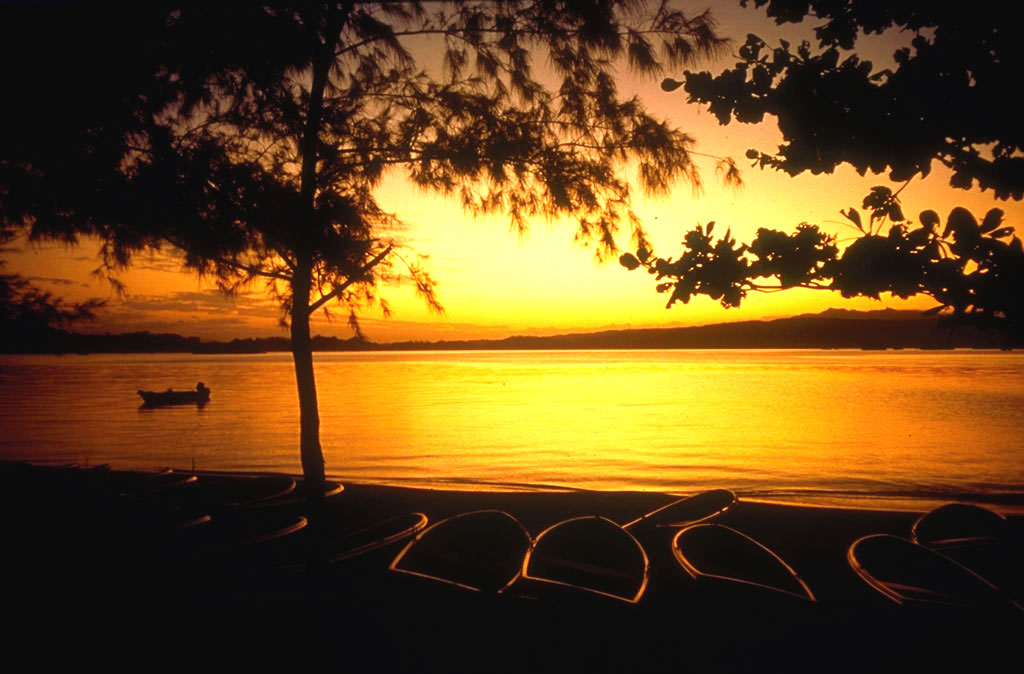
FOOD FOR THOUGHT
“Yaasa ru maasaru.” (Food tastes great when one is hungry.) – Okinawan proverb
After a hard day of battling the throngs on Kokusaidori Street, scuba diving off Sunayama Beach, paragliding over Kabira Bay, whale watching near the Kerama Islands or blowing zzz’s on the milky-white sands of Komaka, one’s mind will naturally turn to one’s stomach and the lack of food therein. Okinawan cuisine is highly regarded the world over for its freshness, rich textures and complex aromas and many believe that the traditional Okinawan diet is responsible for Okinawans, on average, outliving all other nationalities. In Okinawa, food is considered as important for its medicinal qualities as it is for its taste and nutritional value. Indeed, in Okinawa they have an expression that translates to, “eat and be cured.”
Makishi Public Market is located on Ichiba Hondori Street, adjacent to Kokusaidori Street in central Naha, and is where the hungry flock in search of a bite to eat – Okinawan style. Shopkeepers announce their specialties and their unbeatable prices to potential passing customers – the western faction of which often cruise by with scrunched up faces, holding their noses with looks of sheer disbelief written across their dials. This market is known as ‘Okinawa’s kitchen’ and you’ll find everything here from goat sashimi and fresh shellfish, to pig’s ears, feet, snouts and gonads. Everything you purchase on the first floor of the market can be immediately taken to the second floor to be cooked, for a small fee, in one of the small Ryukyu restaurants – how’s that for fresh?
For those who prefer to select their meal from a menu rather than a tank or a skewer, there’s a plethora of local izakayas and food shacks offering dishes unique to Japan’s archipalego. Dishes from regular local restaurants are usually priced at between Y500-600, and typically include rice and soup.
Okinawan favorites include champuru, which means a stir-fried dish. Take tofu champuru, for instance. Tofu is lightly fried with bean sprouts, cabbage and pork culminating in a quick and easy-to-prepare feast that satisfies both palate and stomach alike. Great for those on the go who need a light meal to replenish the energy lost to the July rays.
Okinawa soba is made with flour and contains no buckwheat at all. The soba is flat in shape and mixed with a little oil after boiling. It is served in a steaming pork-bone broth, adding a deep-richness to the noodles and slices of pork, fish cake and finely chopped green onions are added giving color, flavor and further contributing to a delectable and unmistakable aroma. It’s basically the consummate Okinawan stomach-filler, or an effective preemptive strike against the following morning’s hangover.
It’s almost impossible when venturing through Okinawa not to come across a dish known as rafute (glazed pork). Cubes of pork are simmered for hours in a broth of bonito shavings seasoned with sugar, soy sauce and awamori (distilled liquor made from rice and black malted rice). The pork, with the skin still attached, becomes so tender during the simmering process that it simply falls apart when touched by chopsticks.
The tipple of choice among Okinawans and visitors to the island is Orion beer. Brewed in Nago, a region renowned for its excellent quality of natural spring water, Orion draft has long been the people’s choice. The beer is characterized as crisp and refreshing and a mellow, smooth and balanced taste is achieved through slow maturation. Orion’s familiar golden glow is achieved by passing the matured beer through a computer-controlled filtration machine. Boasting an alcohol content of 5 percent and imported ingredients carefully selected from the highest quality in Europe, it’s always a good time in Okinawa to crack open a cold one.
FESTIVE TIMES
“Miinai chichi nai.” (We learn by watching and listening.) – Okinawan proverb
For centuries the Ryukyu Kingdom has fostered amongst its people a deep sense of identity and belonging. Through song, dance, poetry and prayer ancient philosophies are passed on from one generation to the next, thus ensuring that the animistic wisdom of the Ryukyu lineage lives on and that the island people live in harmony with the almighty sea, the land they toil, the celestial sky and humankind.
 The eisa folkdance is a dynamic, spirited dance performed, with a few exceptions, by both men and women. The circular dance is accompanied by the rhythm of barrel drums and small hand drums called paranku. The melodies are provided by shamisens. Although the eisa dance can be seen all year round at events and festivals, the midsummer Bon festival is the time when the eisa dance is prevalent throughout the prefecture. The eisa originated from a group dance called esa omoro, to which buddhist songs and dances were later added. Although largely regarded today as bright, colorful and energetic entertainment, the eisa originally had an important religious function of giving repose to the dead.
The eisa folkdance is a dynamic, spirited dance performed, with a few exceptions, by both men and women. The circular dance is accompanied by the rhythm of barrel drums and small hand drums called paranku. The melodies are provided by shamisens. Although the eisa dance can be seen all year round at events and festivals, the midsummer Bon festival is the time when the eisa dance is prevalent throughout the prefecture. The eisa originated from a group dance called esa omoro, to which buddhist songs and dances were later added. Although largely regarded today as bright, colorful and energetic entertainment, the eisa originally had an important religious function of giving repose to the dead.
More contemporary Okinawan festivals on offer this July include a prefecture-wide Tug-of-War. Involving thousands of people tugging on a gigantic rope, this festival is directed towards the god of farmers to pray for bountiful harvests. Due to the size and length of the rope and the huge numbers of people involved in the tug, this festival has actually made its way into the Guiness Book of Records.
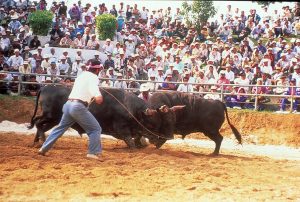 This July, throughout the prefecture bullfighting festivals will also be held. Aficionados turn out in droves to dusty arenas to, in contrast to western bullfighting, watch two bulls do battle with each other. The bulls, urged on by their trainers, start by locking horns and the object is for one bull to push the other outside the ring – similar to sumo wrestling, but generally speaking the sumo guys weigh more.
This July, throughout the prefecture bullfighting festivals will also be held. Aficionados turn out in droves to dusty arenas to, in contrast to western bullfighting, watch two bulls do battle with each other. The bulls, urged on by their trainers, start by locking horns and the object is for one bull to push the other outside the ring – similar to sumo wrestling, but generally speaking the sumo guys weigh more.
For more information about traveling to Okinawa check out the Japan National Tourist Organization’s homepage at: http://www.jnto.go.jp/eng/
The Okinawan proverbs contained in this article were taken from The Okinawan Mind in Proverbs, by Zenko Shimabukuro
J-Select would like to thank the Japan National Tourist Organization for providing the photographic images used in this article.
Story by Jonathan Day
From J SELECT Magazine, July 2004

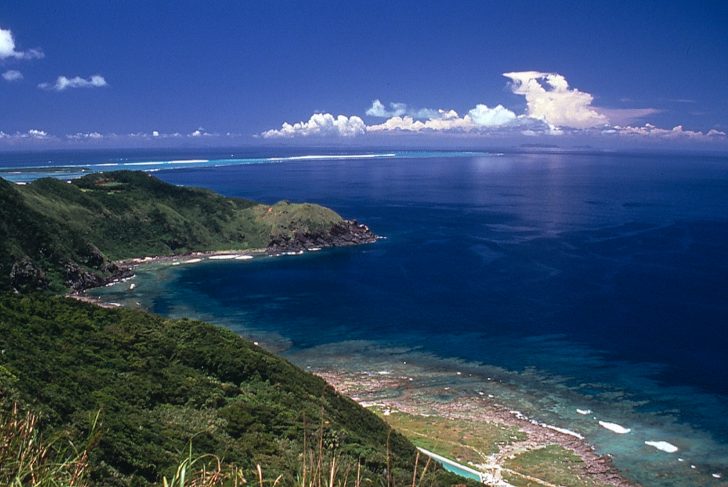


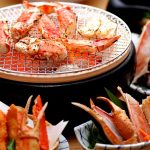
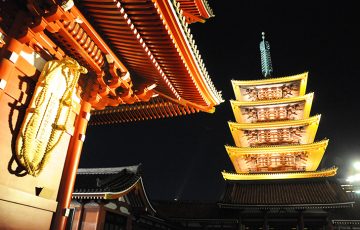
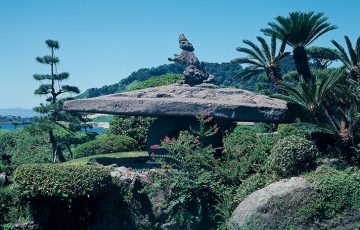
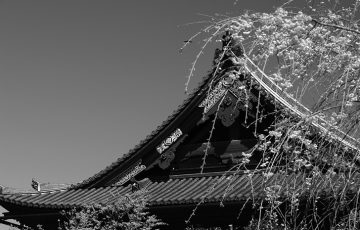
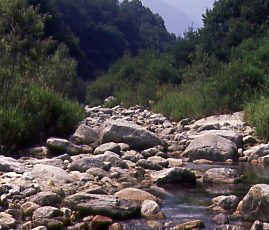

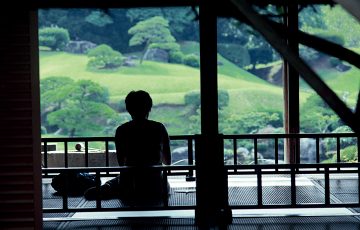
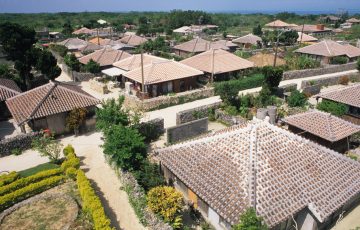
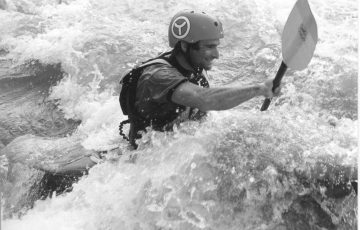


Recent Comments